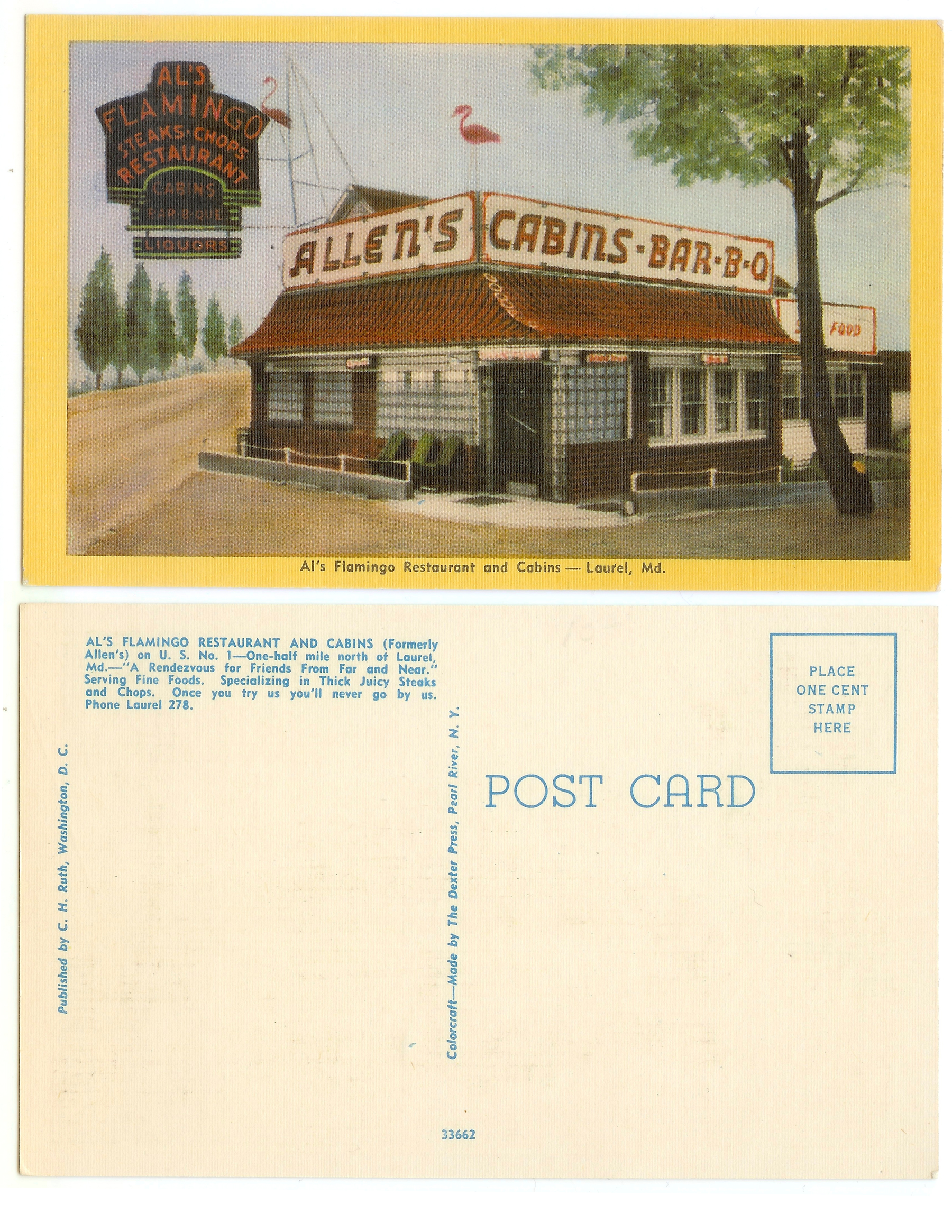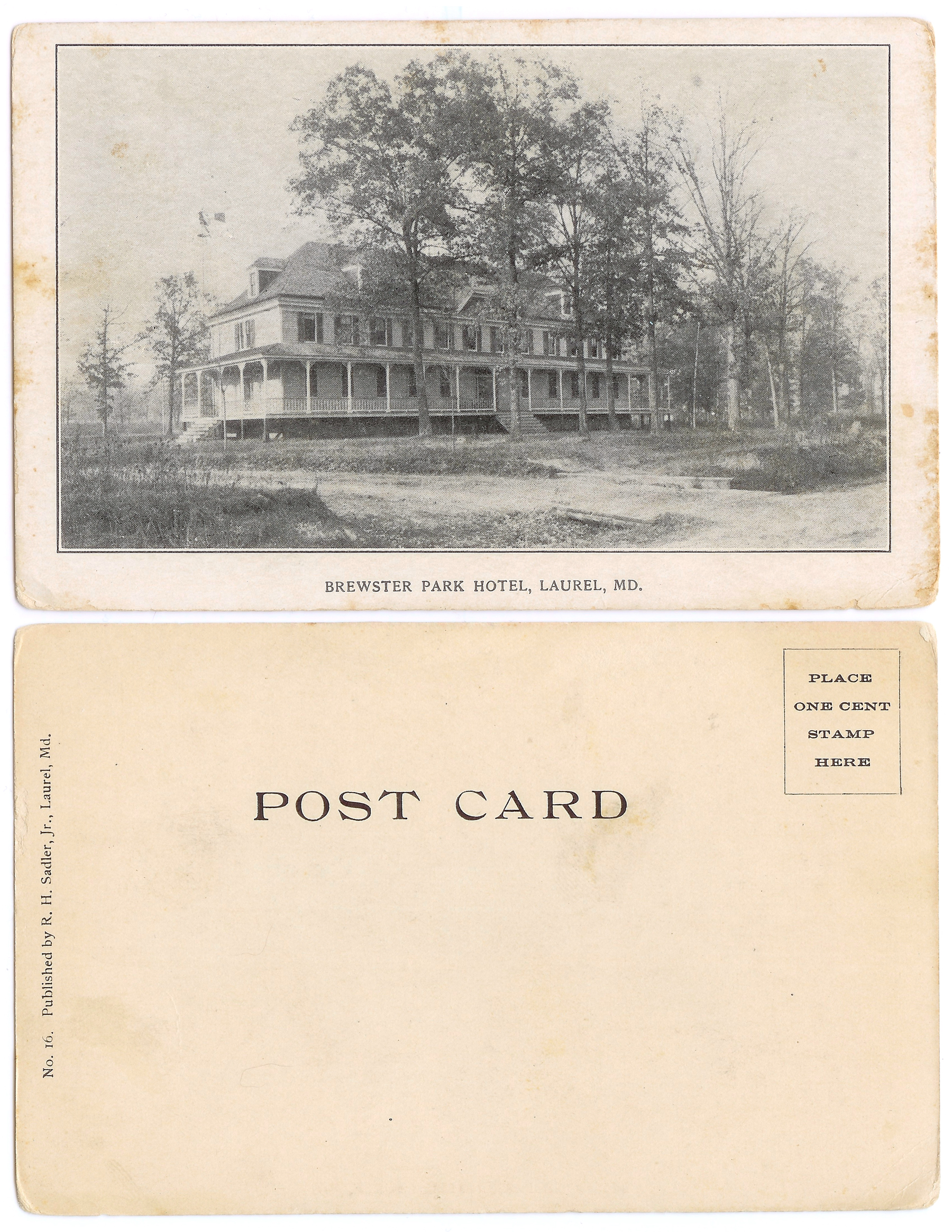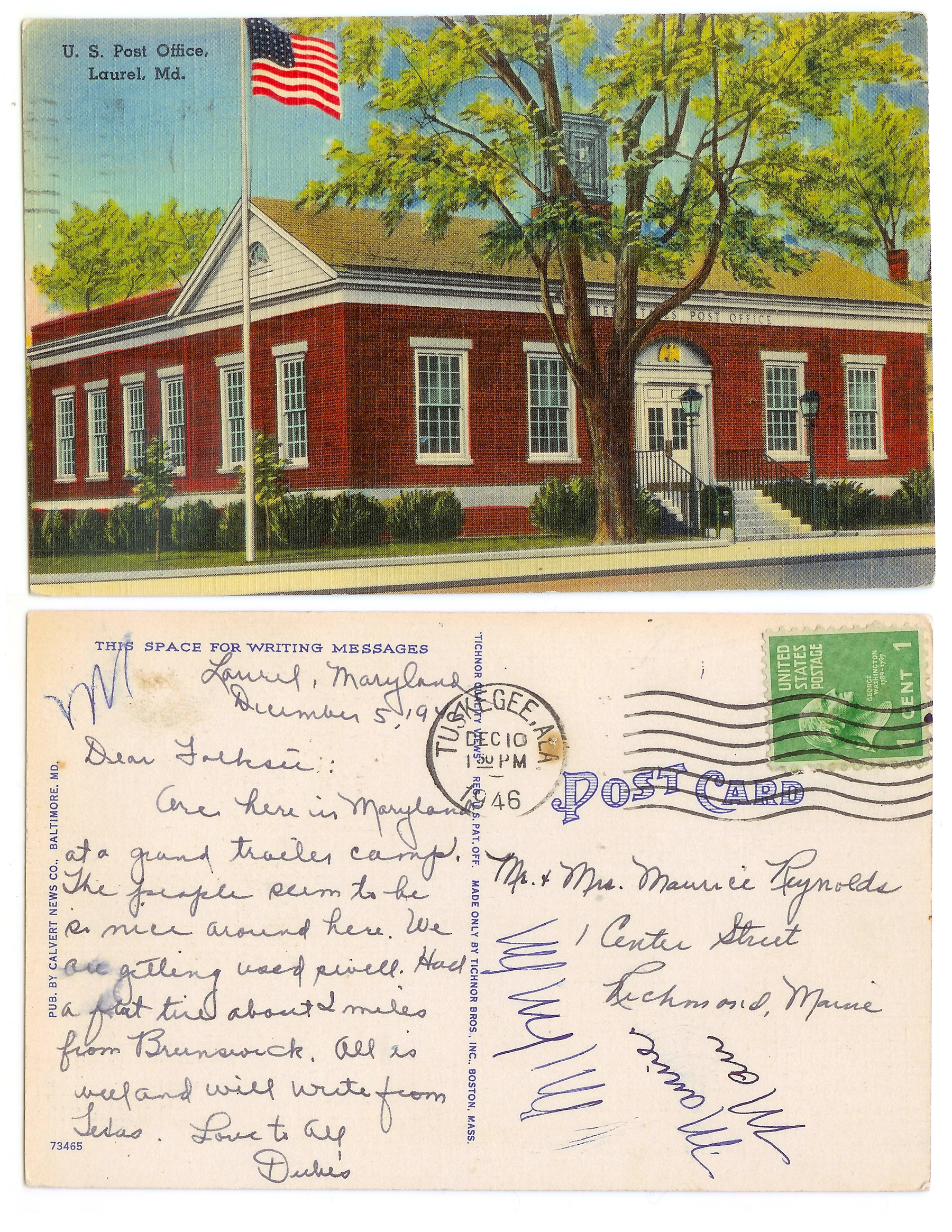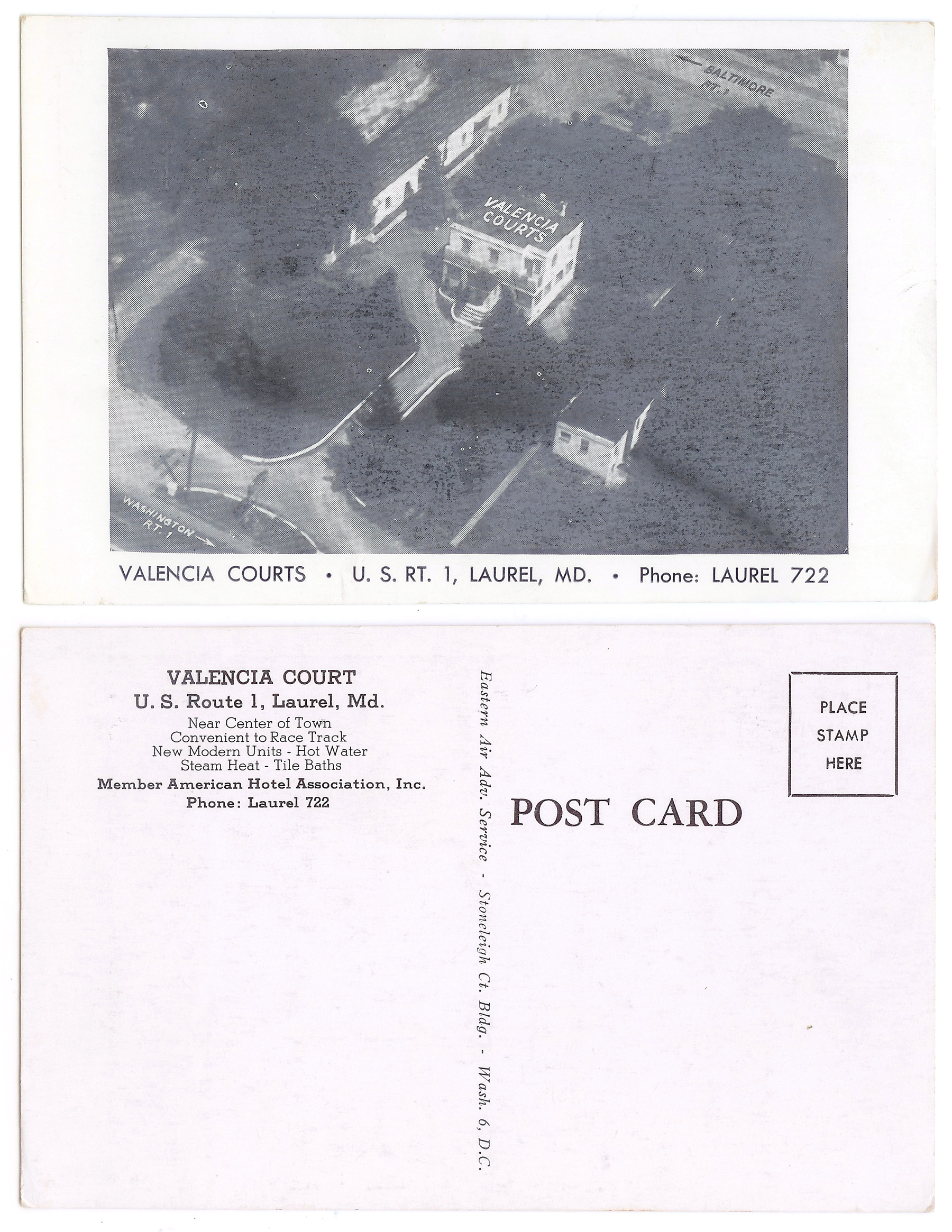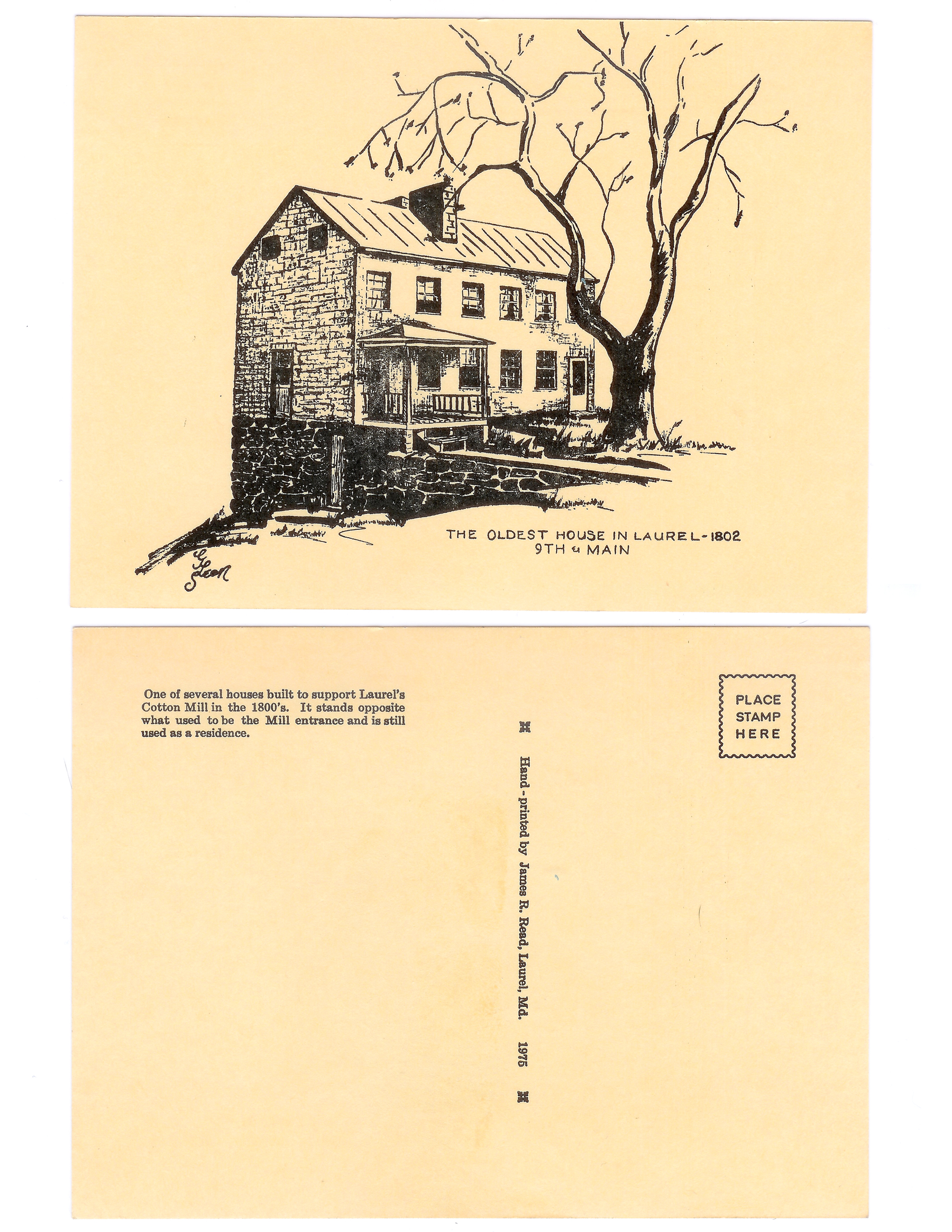On Saturday morning, I learned the sad news that John Floyd II—a lifelong Laurelite and tremendous source of local historical knowledge and photos—had passed away.

I first met John in 2011 through eBay, of all places. Shortly before starting my Lost Laurel project, I’d been researching the history of Steward Manor Apartments, where I grew up. I came across a set of original 1970s photos being offered on eBay—photos primarily of fire and rescue apparatus from Laurel, Maryland—but which included one that clearly showed Steward Manor in a shot of the Rescue Squad’s heavy truck turning onto Lafayette Avenue in 1974:

I bought the photos, then contacted the seller to inquire about whether or not he had any others that I might be interested in.
Boy, did he ever.
Thus began a frequent email correspondence that, more often than not, included lengthy, detailed narratives from John—emails (through his ancient AOL account, which he steadfastly refused to upgrade from) that were more like photo essays, comprised of images from his massive collection that showcased any number of people, places, and things from Laurel. He thoroughly enjoyed composing these messages, in which he could share with readers a visual journey through any number of topics. Many of these would include “then and now” photos showing various locations around town.
In April 2012, the Laurel Art Center, one of my all-time favorite Laurel businesses, was closing its doors. I made the pilgrimage to soak in the ambiance one final time, and to photograph the store for posterity.
While photographing each aisle, a vaguely familiar looking fellow approached—also holding a camera. “Looks like we had the same idea today,” he said. And within seconds, I realized that this had to be John Floyd.

“John?” I asked. “Rich?” He replied. Despite corresponding via email for the past year, we’d never actually met in person until that afternoon—the final day that the Laurel Art Center was open.

The inspiration for Lost Laurel began, in part, through those earliest interactions with John. As I became more curious about various places from Laurel’s past, he proved to be a dependable resource. Not only that, but he had saved countless photos and artifacts going back decades: newspapers, postcards, carryout menus, telephone directories, receipts, shopping bags, business cards, advertisements, and more—including unopened products from long-closed department stores like Zayre and Jamesway.
For the next couple of years, John combed through his house at 805 Fifth Street—the home built by his stepfather, Harry Fyffe (owner of the infamous Fyffe’s Service Center) where he’d lived since childhood. Every few weeks, John would excitedly notify me that he’d put together a box of Lost Laurel goodies for me, much of which I’ve since shared on Facebook. I would pay him more than a fair price for the stuff, knowing that he would benefit from the “extra dosh”, as he liked to call it, speaking in his British accent—a sample of which you can hear in this short video we recorded promoting my Lost Laurel book:
John was a unique character, to say the least.
I quickly began to suspect that his accent (which wasn’t limited to speech, as he also wrote in the Queen’s English) wasn’t exactly authentic. This occurred to me while I was giving him a ride one day. When the subject of England came up, I asked him, “When was the last time you were over there, John?” Without missing a beat, he replied, “I’ve never actually been there, mate.”
John’s mother, Phyllis, was indeed from Great Britain; but John claimed to have been born during her 1957 transatlantic ship ride over to the United States. Settling briefly in Camden, NJ, they relocated to North Laurel in 1964—living for a time in the old Laurel Park Hotel boarding house near the race track. Phyllis and John Sr. separated, and she eventually met and married Harry Fyffe, who welcomed her and young John into his home on Fifth Street.



While John wasn’t a particularly good student, (his Laurel High School report cards consistently show poor grades, and admonishments from frustrated teachers who couldn’t get him to focus on his studies) he was clearly intelligent. And he excelled particularly at music. John’s high school band experience evolved into a lifetime love of vintage big band music, and playing gigs with the Windsor Kessler Orchestra and other bands (including forming his very own Royal Blue Orchestra) was essentially the only career he ever had.




John’s musical career was flourishing by the mid-1980s, but the death of his beloved mother in 1987 took a heavy toll on him. Burdened with medical bills from her cancer treatment, (and a number of poor financial decisions) he nearly lost everything. He then found himself living alone in the house on Fifth Street, (Harry had died back in 1981) likely with no clue that things would essentially remain that way for the next three decades, and for the remainder of his life.

By the summer of 2012, John shared with me that he was having some serious financial difficulties. That was an understatement.
Despite his house having long been paid for, John wasn’t able to cover the annual property tax. Apparently, this wasn’t the first time, nor would it be the last. The home that he’d lived in for half a century was always within a whiff of being taken from him by Prince George’s County over a matter of a couple thousand dollars.
For all of his otherwise brilliance—his musical abilities and his vast knowledge of history—John seemed completely inept at the day to day responsibilities of adulthood. Worse, he’d effectively boxed himself into a corner. Without a car, his job options (which were already limited) became practically nonexistent. And at over 300 lbs. after years of physical inactivity, he had difficulty walking any significant distance.
Since 2004, John had been content at making his living exclusively by selling items on eBay—both his own items, and those on consignment for others. While it was enough for him to get by, his meager earnings were further depleted by nearly constant veterinary bills. Over the years, John had taken in a number of cats. At one point, he had upwards of 16 coming and going on his property, which he deemed “Catford Manor House of Nasty Acres”. John’s heart was in the right place, but taking on the responsibility of caring for so many pets in his circumstances was yet another in a series of poor decisions.
There was a kind of humorous irony in seeing this gentle giant of a man surrounded by felines with names such as “Sweet Pea”, “Baby Number 3”, “Little Grey”, and “Miss Kitten”; but there was nothing funny about his propensity to put their well-being above his own. Frequent and costly veterinary emergencies only hastened the decline of John’s house, which suffered from decades of neglect.

I organized a fundraiser for John in June 2012 to help pay his overdue property tax bill. He reluctantly agreed to let me tell his story here on Lost Laurel, citing embarrassment and shame at having to accept charity. I explained that it was a better alternative to homelessness, and he agreed. Dozens of people sent money via PayPal and checks to his home, including many folks who’d never met him. Dozens more supported him by purchasing his eBay items. And just in the nick of time, John was able to settle the debt.
But the following years brought little in the way of relief, and I began to notice more of a pattern in how John accepted the charity of others. On the rare occasions when he had a little extra money, (an eBay sale of anything over $50 was a windfall to him) it would quickly disappear. Rather than budget his money and purchase essentials as needed, John would typically splurge at the nearby 7-Eleven on junk food.
Friends and neighbors would also frequently drop by with donations of groceries, toiletries, cat food, and kitty litter, which John would express his gratitude for. But, surprisingly, there were also times when he could be far less gracious. He once commented that a particular brand of soap someone had donated “wasn’t his brand of choice”.
John would also occasionally fall behind in his utility payments, often using money set aside for one bill to pay another—and this would result in lengthy shut offs of his telephone, internet, electric, or all of the above.
He joined Facebook in August of 2012 after months of reluctance. In many ways, it opened some doors for him; but in other ways, it was yet another hindrance to any hope of progress.
John began to use Facebook as a networking tool through which he could sell photo CDs of his extensive collection of historical fire and rescue photos. And he did well for a while, but it wasn’t the most sustainable endeavor. (Once folks had purchased the collection, they weren’t likely to be repeat buyers).
Facebook can be a distraction for many of us, and it was clearly a major distraction for John. I can only begin to guess at the number of hours he spent on Facebook, day and night. John was rarely content to simply “like” a friend’s post—he couldn’t resist commenting on it. And his comments would often include photos that he felt were relevant, which undoubtedly took time for him to locate. His comments—often lengthy tomes on subjects as diverse as circus history and trainspotting—would appear at ungodly hours of the night, too—evidence that he was still sitting at the computer at 3 AM rather than sleeping; rather than taking care of himself, or his responsibilities.
When he inevitably found himself in another financial pickle, he would post about it on Facebook. Those posts almost always began with, “Well, what a revoltin’ situation THIS is …” They would go on to describe the latest predicament, and end with a “Thank you ever so kindly” to those who pledged to help.
By 2014, John somehow seemed to be worse off than he was when I’d met him. Despite increasing dependence on the generosity of others, he was once again facing eviction over nonpayment of property tax. He still refused to seek actual work in earnest, with the exception of putting in a long shot application next door at the Laurel Police Department for a dream position as a dispatcher. When he didn’t get that job, I suspect he never gave any serious consideration to finding another. He’d once noticed a young lady dressed in a Statue of Liberty costume, waving at drivers passing by what was then Liberty Insurance on Gorman Avenue. He made the comment to me that he’d “never lower himself to taking a job doing something like that.” I told him that he might want to rethink that attitude, as she was making an income that he wasn’t.
John had many faults, and while this isn’t meant to be a eulogy for him, I don’t want to overly dwell on the negative. There’s no way of knowing why some people’s lives turn out the way they do; or how much some of our problems are due to bad luck, poor judgment, or something else. I think John had the potential to do a lot more in life, had he really applied himself. But nonetheless, he still managed to touch a lot of lives.
His photography documented not only some incredible moments in Laurel’s history, (including many photos that appeared in the Laurel Leader through the years) but countless fire and rescue vehicles from countless territories. He inspired many of us to look more closely at the mundane around us—to always have a camera at the ready.
I came across this photo recently in the Berman Collection (the family who built Laurel Shopping Center). It’s a scene from the Summer of 1970—one of the many promotions at Laurel Shopping Center featuring what appears to be Keystone Kops. Not surprisingly, there in the center of it all—with camera in hand and a smile on his face—is a young John Floyd.

I’ll always be grateful for having had the chance to know John, and will certainly never forget him. His contributions to Lost Laurel and The Laurel History Boys are immeasurable.
I’m also grateful that he had others who were a tremendous help to him over these difficult years—friends like Bob Bain, Wayne Carr, Pete Lewnes, Bonnie Oskvarek, and many others who so generously helped him with money, transportation, and friendship.
This is the part where John would likely pipe in with that Cockney accent (authentic or not) and tell us, “Oy! Listen up, you lot, and knock off all this bloody sentimental rubbish!”
For so many of us—local historians, firefighters, train buffs, circus enthusiasts, and more—John Floyd has left an indelible impression. Rest in peace, mate.
Update 8/27: I’ve spoken to John’s step-sister, Kellie, and she has agreed to entrust me with his vast photo collection, with the goal of creating a legacy page on LaurelHistory.com to honor his lifelong passion of photographing Laurel. This will be a great honor for me, and a labor of love. I also have no doubt that it’s what John would’ve wanted.
Also, Wayne Carr is in the early stages of planning a Celebration of Life for John, possibly in September or October. Please donate what you can at the GoFundMe link for the event.

